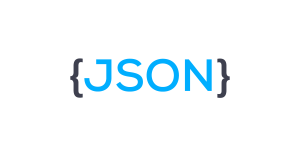JSON (JavaScript Object Notation) has become a ubiquitous data interchange format, and Java provides several libraries for working with JSON. In this tutorial, we’ll explore some popular Java JSON libraries, highlighting their features and providing practical examples.
1. Introduction to JSON:
JSON is a lightweight data-interchange format that is easy for humans to read and write, and easy for machines to parse and generate. It consists of key-value pairs, where values can be strings, numbers, objects, arrays, boolean, or null.
Example JSON:
{
"name": "John Doe",
"age": 30,
"city": "New York",
"isStudent": false,
"grades": [90, 85, 95]
}2. Choosing a JSON Library:
Several JSON libraries are available for Java, each with its own strengths and use cases. The three major libraries we’ll explore in this tutorial are Gson, Jackson, and JSON-B. Gson is known for its simplicity, Jackson for its versatility, and JSON-B for being a standard part of the Java EE platform.
Now, let’s delve into each library with practical examples.
3. Gson Library:
Introduction:
Gson is a lightweight Java library for JSON serialization and deserialization developed by Google. It provides simple APIs to convert Java objects to JSON and vice versa.
Example Usage:
Dependency:
To use Gson in your project, include the following Maven dependency:
<dependency>
<groupId>com.google.code.gson</groupId>
<artifactId>gson</artifactId>
<version>2.8.9</version>
</dependency>Serialization and Deserialization:
Custom Serialization and Deserialization:
This example showcases custom serialization and deserialization for a LocalDate field in a PersonWithDate class.
4. Jackson Library:
Introduction:
Jackson is a popular JSON library for Java that provides a flexible and powerful set of features for working with JSON data. It is widely used in both Java and non-Java projects.
Example Usage:
Dependency:
Include the Jackson dependencies in your project:
<dependency>
<groupId>com.fasterxml.jackson.core</groupId>
<artifactId>jackson-core</artifactId>
<version>2.13.1</version>
</dependency>
<dependency>
<groupId>com.fasterxml.jackson.core</groupId>
<artifactId>jackson-databind</artifactId>
<version>2.13.1</version>
</dependency>Serialization and Deserialization:
Handling JSON Arrays and Nested Objects:
Customizing Serialization and Deserialization:
This example demonstrates custom serialization and deserialization for a LocalDate field in a PersonWithDate class using a SimpleModule.
5. JSON-B Library:
Introduction:
JSON-B is a standard part of the Java EE/ Jakarta EE platform for JSON processing. It provides a set of annotations for customizing the mapping of Java objects to JSON.
Example Usage:
Dependency:
JSON-B is part of the Jakarta EE platform, and you can include it in your project using the following dependency:
<dependency>
<groupId>jakarta.json.bind</groupId>
<artifactId>jakarta.json.bind-api</artifactId>
<version>1.0.1</version>
</dependency>Serialization and Deserialization:
Customizing Serialization and Deserialization using Annotations:
This example showcases the use of annotations for customizing serialization and deserialization, including a JsonbDateFormat annotation for a LocalDate field.


